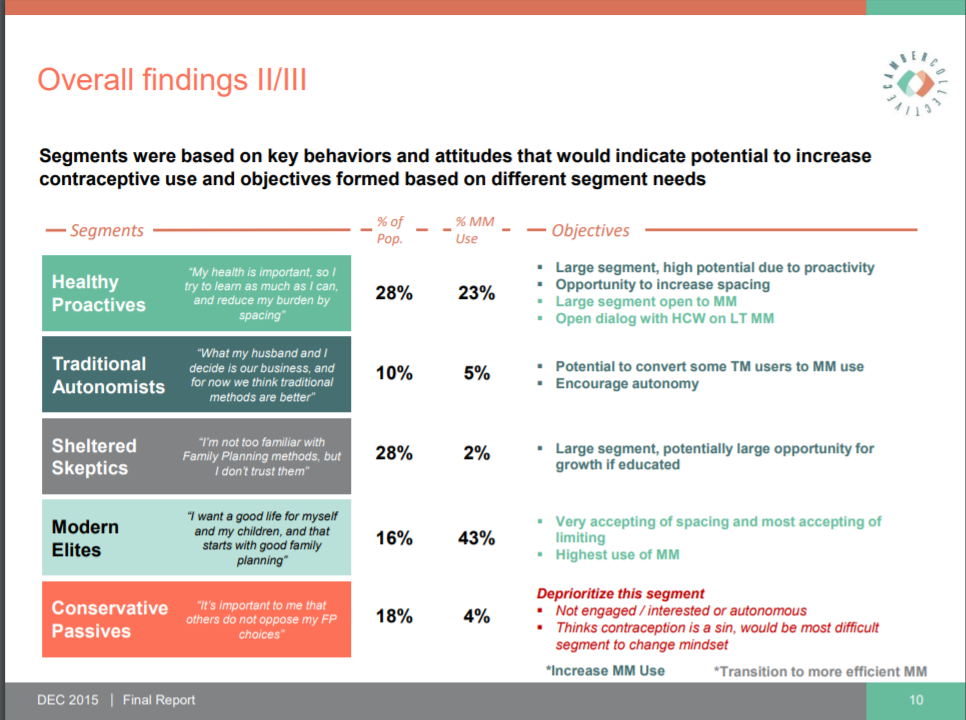Segmentation is the process of dividing a large audience into smaller groups of people – or segments – who have similar needs, values or characteristics. It recognizes that different groups will respond differently to social and behavior change (SBC) messages and interventions. Segmenting audiences enables a program to focus on those audience members who are most critical to reach and also to design the most effective and efficient strategy for helping each audience adopt new behaviors.
Tailoring an SBC strategy to the characteristics, needs and values of important audience segments improves the chances for desired behavior change.
Traditionally, audience segmentation in SBC has focused on dividing subgroups based on the demographic, geographic, psychographic, or attributional characteristics perceived to be significant in predicting behavioral outcomes. Advanced audience segmentation builds on traditional segmentation approaches by offering a rigorous process to identify the most meaningful characteristics on which to define and target sub-groups.
Advanced audience segmentation relies on a phased process of background research, in-depth qualitative research, quantitative research, and advanced statistical analysis to create a representative base of audience segments. It produces a framework to understand how certain beliefs, behaviors, or needs vary across a given population. This process offers greater nuance and insight into how to best identify and reach priority groups to drive behavior change. By employing this process, SBC interventions can improve their message tailoring and targeting, and other key considerations such as design, pricing, and positioning.
Camber Collective has been conducting advanced segmentation analyses for family planning initiatives in collaboration with the Nigerien Ministry of Health and Hewlett Foundation, as well as a part of the Transform/PHARE consortium. This Trending Topic includes sample materials from these studies and demonstrates how this approach can be used to create evidence-based SBC strategies to improve family planning demand and use.

We also present a variety of tools and project examples for utilizing audience segmentation in family planning programs. In addition, we offer, below, a selection of journal articles.
We welcome your contributions to this topic – if you have materials which you’d like to share with your colleagues, please send them to the Health COMpass curator, Susan Leibtag, susan.leibtag@jhu.edu.
Additional Resources
- Strategic Segmentation—Bain.
- Segmentation and Positioning for Strategic Marketing Decisions, by James H Myers (1996). (for purchase on Amazon.com)
- Market Segmentation: Conceptual and Methodological Foundations, by Michel Wedel and Wagner Kamakura (2000). (for purchase on Amazon.com)
- Handbook of Market Segmentation: Strategic Targeting for Business and Technology Firms, by Art Weinstein (2004). (for purchase on Amazon.com)
- Market Segmentation: How to do it and How to Profit From It, by Malcolm McDonald and Ian Dunbar (2012). (for purchase on Amazon.com)
- Cluster Analysis and Segmentation: by Theodoros Evgeniou at INSEAD.
- Latent Class Analysis: by MarketResearch.org.
Photo credit: A group of women dairy producers from Abdullahpur, Bangladesh. © 2011 Akram Ali, Courtesy of Photoshare
